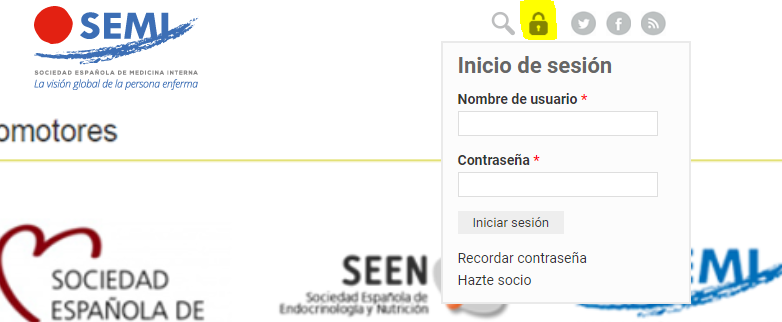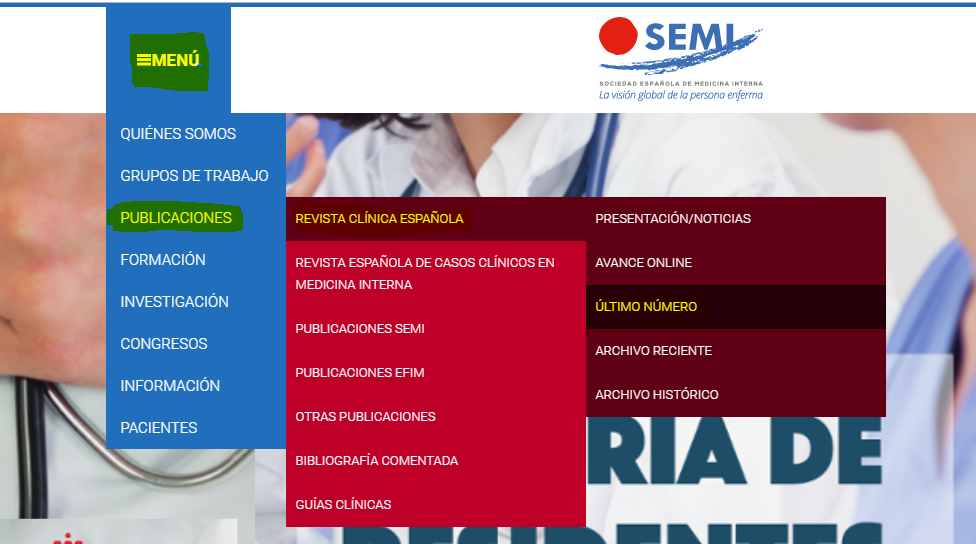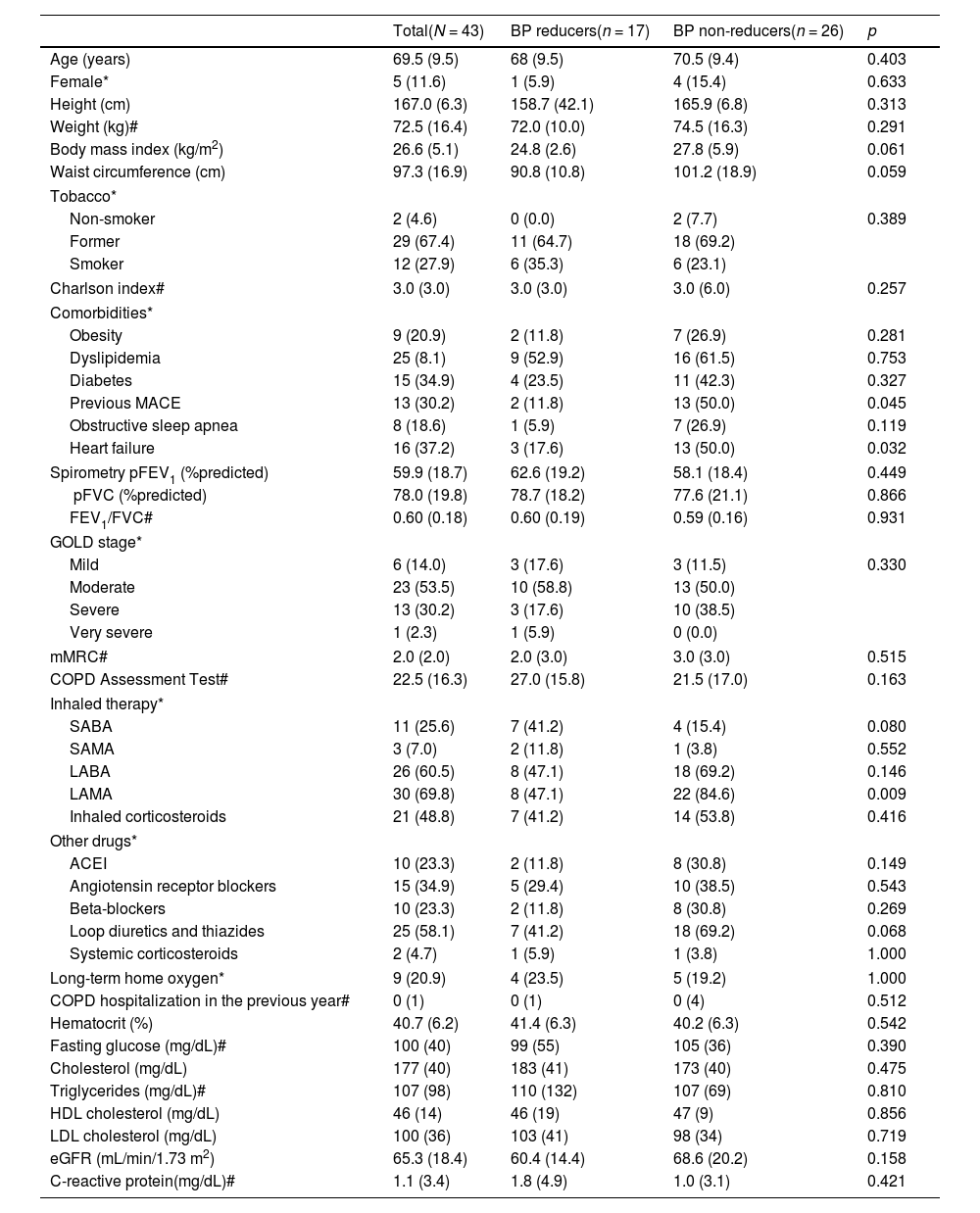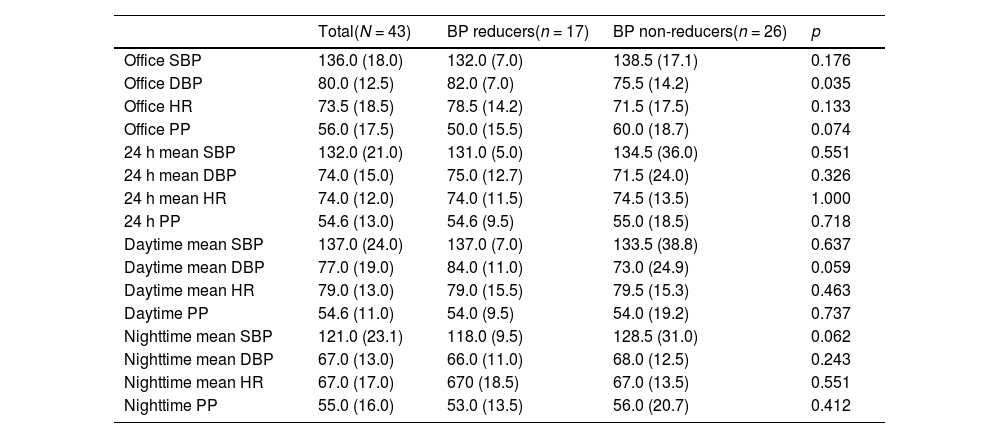To describe the circadian blood pressure (BP) pattern in stable COPD patients.
MethodsWe included stable COPD patients from Internal Medicine Departments. Office BP and ambulatory BP monitoring were performed. Patients were classified as BP reducers (dipper or extreme dipper) or non-reducers (non-dipper or riser).
ResultsWe included 43 patients (5 women, mean age 69.5 ± 9.5 years). Among them, 11 had sustained normotension, 13 sustained hypertension, 2 white coat hypertension, and 17 masked hypertension. Arterial stiffness was observed in 12 (27.9%) patients. Overall, 26 (60.5%) exhibited a non-reducer BP profile. Non-reducers had a higher frequency of previous major cardiovascular events (50% vs. 11.8%, p = 0.020) and long-acting muscarinic antagonist use (84.6% vs. 47.1%, p = 0.009).
ConclusionsHypertension is often masked in COPD patients, who frequently display an altered circadian BP pattern. Longitudinal studies with larger samples are needed to evaluate the impact of these patterns on COPD progression.
Describir el patrón circadiano de presión arterial (PA) en pacientes con EPOC estable.
MétodosIncluimos pacientes con EPOC estable desde servicios de Medicina Interna midiendo en consulta y ambulatoriamente la PA. Clasificamos los pacientes en reductores de PA (patrones dipper o dipper extremo), y no reductores (no-dipper o riser).
ResultadosIncluimos 43 pacientes (5 mujeres, edad 69.5 ± 9,5 años). Once pacientes tenían normotensión mantenida, 13 hipertensión mantenida, dos hipertensión de bata blanca y 17 hipertensión enmascarada. Doce (27,9%) presentaban rigidez arterial y 26 (60,5%) perfil no reductor de PA. Los no reductores tuvieron más eventos cardiovasculares previos (50% vs 11,8%, p = 0,020) y mayor uso de antimuscarínicos de acción prolongada (8,.6% vs 47,1%, p = 0,009).
ConclusionesFrecuentemente los pacientes EPOC tienen hipertensión enmascarada y patrón circadiano alterado de PA. Se necesitan estudios longitudinales con mayor tamaño muestral para evaluar el impacto de estos patrones en la progresión de la EPOC.
Article
Diríjase desde aquí a la web de la >>>FESEMI<<< e inicie sesión mediante el formulario que se encuentra en la barra superior, pulsando sobre el candado.

Una vez autentificado, en la misma web de FESEMI, en el menú superior, elija la opción deseada.

>>>FESEMI<<<







